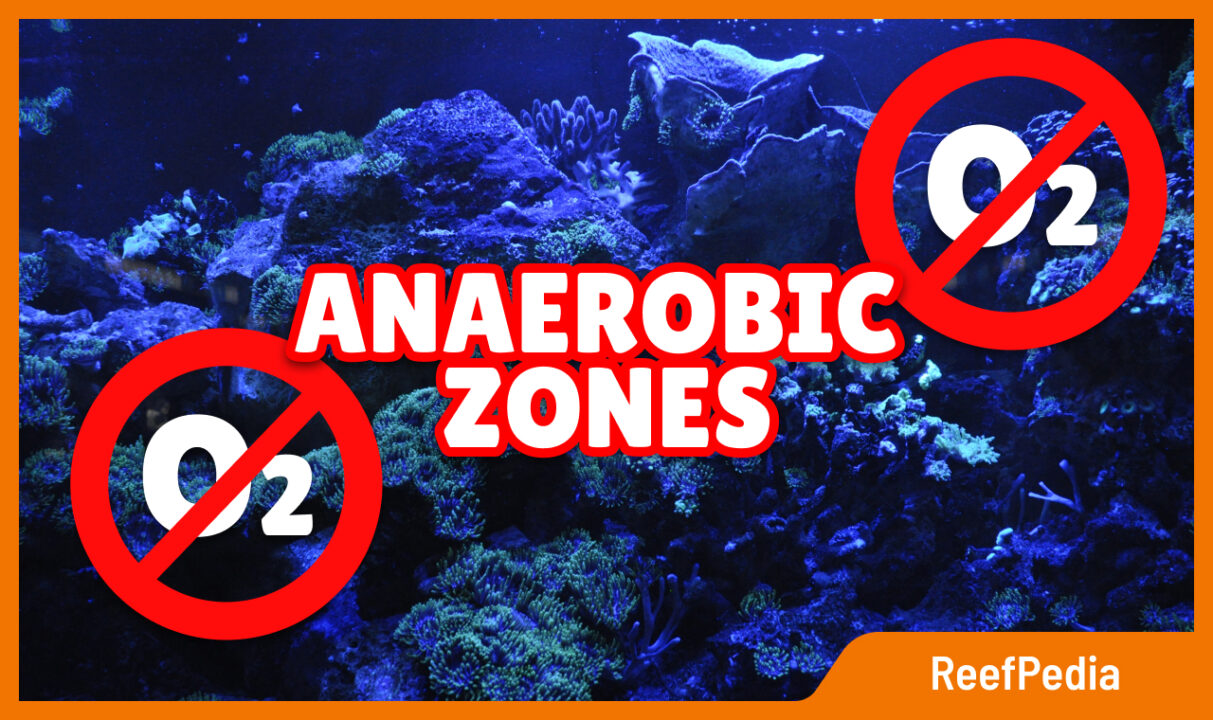Anaerobic zones
When designing a marine aquarium we constantly read about taking care of proper water circulation so that there are no dead zones anywhere, but have you ever wondered why this is important?
In this article I would like to present my observations on anaerobic zones and their potential dangers for the marine aquarium.
What is an anaerobic zone anyway?
Anaerobic zones are a phenomenon found in saltwater aquariums. They are areas in the tank that are poor or completely deprived of oxygen. These oxygen-deficient areas have a detrimental effect on the nitrification process, which is responsible for converting ammonia to nitrite and subsequently to nitrate. The nitrifying bacteria involved in the nitrification process need sufficient oxygen to carry out the entire nitrification process.
What happens in the anaerobic zone?
Anaerobic bacteria live in such zones. They use the oxygen attached to the nitrate for their metabolic processes. Nitrogen is then released, which should eventually be released into the atmosphere.
Denitrification
The process of nitrate reduction using anaerobic bacteria is referred to as denitrification. These bacteria first convert nitrate (NO3) to nitrite (NO2) and in the next step to nitrogen (N2).
Anaerobic bacteria require a pH higher than 7.0.
Where anaerobic zones can occur in an aquarium
The most common area for their occurrence in a tank is the bottom layer of sand. In the past, this process was enhanced by building so-called DSB or by creating thick layers of sand in the marine aquarium.
Places where we can find denitrifying bacteria are also rocks. There are a number of microchannels in the rock, which are difficult to access for rapid water flow and thus access to oxygen.
Dangers of denitrification and anaerobic zones
The denitrification process contributes a certain amount of hydrogen sulphide, which should be processed by other bacteria in the aquarium and never reach toxic levels. Hydrogen sulphide has a characteristic smell of rotten eggs (sulphur).
There is a legend in marine aquaristics that anaerobic bacteria produce toxic levels of hydrogen sulphide that can kill fish and other animals. For this reason, it is often advised not to create thick layers of sand and create a risk of hydrogen sulphide generation.
What the truth is would have to be confirmed by an experiment. A reasonable assumption would be that denitrification sites are places that are poorly accessible to the fast water current, but the water in these places moves, just slower. For example, sites with sand over which some water current runs.
The risk of hydrogen sulphide formation is when there is stagnant water in these places. I have seen such tanks where the company building them, instead of glueing a beautiful composition of rock, sort of threw it in resting only on the back of the aquarium. It looked like rubble. There was also a large layer of sand in the tank. All of this contributed to the instability of this ecosystem and caused regular problems with the health of the fish. I saw this model many times and it always led to problems with the proper functioning of the tank. In my opinion, anaerobic zones were forming under the rock where the nitrification process did not take place. Poisonous ammonia was released uncontrollably creating a very dangerous mix of harmful substances.
When I built tanks for clients, I always made sure that no dead zones formed and I never used sand in them.
Summary
Anaerobic zones where bacteria sediment, in my experience, should be designed so that water flows through them slowly but the water current is maintained. I would avoid situations where the water stands completely. The denitrification process is a most positive aspect in cleaning our aquarium of NO3.
As in all matters, in marine aquaristics one should be sensible and not be carried away by either myths or blindly believing people’s opinions.
About the author

Marek Protasewicz
Reefkeeping has been my passion for over 10 years now. I love learning. The hobby has taught me many valuable lessons, patience being the best example.
Combining work and passion is my path. I run Crazy Coral, a marine aquarium shop, for a number of years. Building this business from the scratch I learnt from my own mistakes at a heavy cost.
Later I managed a project aimed at development of methods for quick growth of Corals in non-natural conditions. The project was carried out by Get Sales, Poland.
Presently, I am responsible for distribution strategy at Reef Factory, of which I am a
co-founder. The company produces smart devices for marine aquaristics.
The last projects I have been involved in are Social Reef and ReefPedia.



